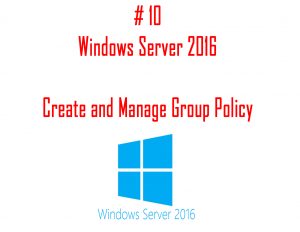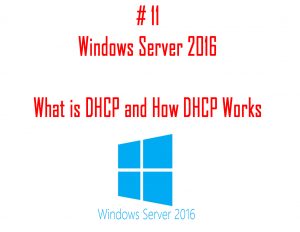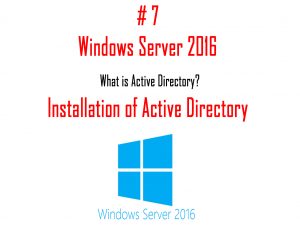This article is a part of the Windows Server 2016 Tutorials series. This article seeks to serve a thorough introduction to Windows Server 2016. In this article, we will see the different versions of the windows server, and different features of the windows server, and we will also talk about the pricing model. So Let’s Get Started.
Introduction
Microsoft releases a group of server operating systems with the brand name Windows Server. This includes all Windows Operating Systems that are branded “Windows Server”, but not any Microsoft product. Windows Server 2003 is the first Windows Server edition released by Microsoft. However, the first server edition of Windows was Windows NT 3.1 Advanced Server, followed by Windows NT 3.5 Server, Windows NT 4.0 Server, and Windows 2000 Server. Windows Servers include features like Active Directory, DNS Server, DHCP Server, Group Policy, IIS, as well as many other popular features used Today.
Windows Server includes the following operating systems :
- Windows Server 2003 was released in (April 2003)
- Windows Server 2003 R2 was released in (December 2005)
- Windows Server 2008 was released in (February 2008)
- Windows Server 2008 R2 was released in (July 2009)
- Windows Server 2012 was released in (August 2012)
- Windows Server 2012 R2 was released in (October 2013)
- Windows Server 2016 was released in (September 2016)
In this series, we will see discuss Windows Server 2016
Introduction to Windows Server 2016
Windows Server 2016 is a server operating system. It is developed by Microsoft as part of the Windows NT family of operating systems, developed concurrently with Windows 10. It comes with a preview version (Technical Preview) that became available on 1 October 2014 together with the first technical preview of System Center. Windows Server 2016 was released on 26 September 2016 at Microsoft’s Ignite conference and became generally available on 12 October 2016. Its earlier version of Windows Server 2012 is the first Microsoft Server OS that has connectivity to the cloud.
The 3 main product editions of the Windows Server 2016 are: –
- Windows Server 2016 Datacenter – Highly virtualized and software-defined datacentre environments
- Windows Server 2016 Standard – Low density or non-virtualized environments
- Windows Server 2016 Essentials – Small businesses with up to 25 users and 50 devices
Improvements in Windows Server 2016
Windows Server 2016 has a variety of new features, including
Nano Server
Microsoft announced a new installation option, Nano Server, which offers a minimal-footprint headless version of Windows Server. It excludes the graphical user interface.
Storage Services
Storage Replica replicates blocks instead of files; files can be in use. It’s not multi-master, not one-to-many, and not transitive. It periodically replicates snapshots, and the replication direction can be changed.
Even more powerful Hyper-V
Hyper-V Server has allowed us to add virtual hardware or adjust the allocated RAM to a virtual machine. However, those changes historically required that we first power down the VM. In Windows Server 2016, we can now “hot add” virtual hardware while VMs are online and running. I added an additional virtual network interface card (NIC) to my running Hyper-V virtual machine.
PowerShell 5 is here
Windows Server 2016 comes with the Windows Management Framework 5.1, which includes the latest version of PowerShell. Leveraging the .NET Framework 4.6, PowerShell 5 comes with several new features, including new cmdlets for managing local users and groups, as well as a new Get-ComputerInfo cmdlet that can dump detailed information on the system.
Nested Virtualization
Nested virtualization refers to the capability of a virtual machine to itself host virtual machines. This has historically been a “no go” in Windows Server Hyper-V, but we finally have that ability in Windows Server 2016. Nested virtualization makes sense when a business wants to deploy additional Hyper-V hosts and needs to minimize hardware costs.
Pricing and licensing overview
To find out the cost of the Licensing you can click on the Following Link:- Click Here
Congratulations! finally, know what is Windows Server and why we use this. In the next Part, we will discuss the Installation of Windows Server 2016.
Download the “Tutorials for Windows server” Android application from the play store now so that you can have access to all the information related to Windows Server.
Conclusion
So this guide is all about the different features, and prices of windows server 2016. Hope you like this cool trick, do share this trick with others too. Leave a comment below if you have any related queries about this.





